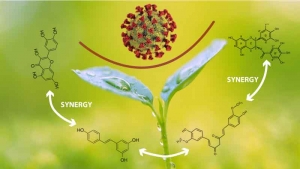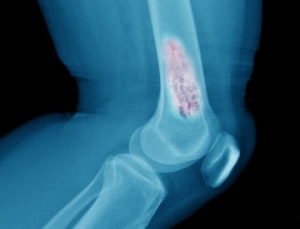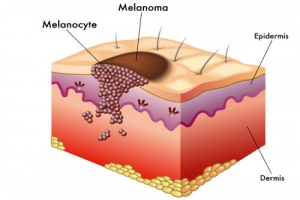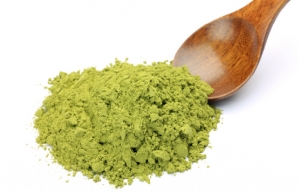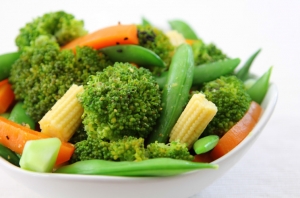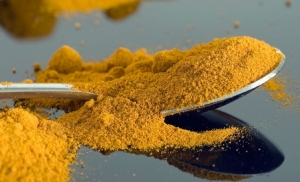February is national cancer prevention month. The “War on Cancer” declared by U.S. President Nixon more than 5 decades ago is still going on and cancer remains the second leading cause of death worldwide. The World Health Organization’s International Agency for Cancer Research has projected that cancer diagnosis will increase by 75%-90% by the year 2030. While we understand more about cancer development and progression, the treatment has not changed much from the standard trio-surgery, chemotherapy, and radiation. Many of the chemotherapy drugs are labeled as carcinogens, yet they are still the mainstay of the treatment. Each of the current treatments is associated with inherent health risks and side effects, however, all remain a part of standard cancer therapy. Chemotherapy drugs kill the rapidly growing cells, and therefore they attack not only cancer cells but also healthy cells in the body (i.e., hair follicles, blood cells, intestinal lining cells). Due to such indiscriminate killing of all cells, the chemotherapy drugs cause widespread damage to the body. When a cell dies as a result of chemotherapy, its remains, called the cell debris, can be dangerous too. They can induce inflammation, which in turn can trigger other cancers and health problems. In one of the studies conducted at the Dr. Rath Research Institute, one group of mice was exposed to the breast cancer cells together with debris generated by the chemotherapy drug, docetaxel, and another group of mice was exposed only to breast cancer cells. The results indicated that the group of mice that was given the cancer cell debris after docetaxel showed significantly more pronounced tumor growth and aggravated inflammatory markers (TNF-alpha, IL-1) than the mice that were exposed only to breast cancer cells.
Plants are the rich source of many nutrients that protect them from diseases, heat, radiation, poisons, and pollutants. These phytonutrients also have numerous health benefits for humans as they provide antioxidant protection to our body’s cells, fight inflammation, and can boost immune system function. In the developed countries, active plant components have been known to be effective against leading health problems, such as cancer, cardiovascular disease, diabetes, and high blood pressure. Recently, during the COVID-19 pandemic, the phytonutrients such as green tea extract, quercetin (present in red onions), resveratrol (present in red grapes), and curcumin (turmeric root extract) have gained renewed interest in their antiviral benefits. However, despite promoting the consumption of 8-10 daily servings of fruits and vegetables, less than 4% of Americans meet these recommendations. Did you have your veggies today?
Here we outline the health benefits of key phytobiological components:
Quercetin is proven to benefit against RNA viruses (coronavirus, flu) and DNA viruses (herpes). It helps in thwarting viral multiplication by killing the live viruses within the cells. It can also protect infected cells from damage caused by the pathogen and aid in the cell repair process.
Curcumin from turmeric root extract is a very potent antiviral and anti-inflammatory agent. It inactivates viruses at multiple steps of infection. First, it can inhibit viral attachment to the cell thus blocking the viral entry. It also prevents viruses from becoming active by blocking production of viral proteins and inhibits the multiplication of viruses and their release from the cells. This stops the spread of infection. Curcumin also protects against widespread inflammation caused by a viral infection. We learned that the so-called “cytokine storm” caused by extensive inflammation is one of the main causes of serious complications in COVID-19. Curcumin has shown benefits against influenza and other types of viruses including dengue, herpes, hepatitis (HBV), papillomavirus (HPV), and leukemia (HTLV). Unlike to antiviral drugs, the viruses have not shown resistance to curcumin.
Green tea extract is known to reduce influenza infections in healthcare workers despite their exposure. In November 2020 there are expected results coming from a large clinical trial testing whether green tea extract also protects the healthcare workers against COVID-19. At the cellular level, green tea extract demonstrated benefits against the coronavirus by inhibiting a key enzyme involved in its multiplication. Similar to curcumin, green tea extract showed antiviral action against influenza A and B viruses, HIV, hepatitis C and Zika viruses. Green tea extract can weaken the coronavirus by inhibiting its outer proteins and can also prevent its attachment to the cells.
Resveratrol and cruciferous vegetable extracts. Resveratrol from grape seeds has been known for its heart-protective effects. However, resveratrol also has antiviral properties and is effective in reducing viral multiplication and inflammation caused by viral infection. The antiviral efficacy of resveratrol includes against viruses such as influenza A and B, SARS-CoV, and rhinovirus (which causes the common cold). Resveratrol and the cruciferous vegetable extracts support the body’s immune system thus contributing to their protective benefits.
Cooperation of nutrients for enhanced benefits. Our body does not rely on one micronutrient to protect itself against microbial invaders. In addition to active plant components, it requires many vitamins and minerals to mount effective protection. Research conducted at the Dr. Rath Research Institute has documented how various nutrient combinations can enhance healthy cellular functions. In our recent studies we tested how micronutrients can impair the coronavirus in entering the cells in our body 1, 2. We showed, among others, that a specific combination of phytonutrients can inhibit binding of a viral protein to the cell receptors by 97% and can also inhibit the expression of these receptors on the cells by 92%, thereby reducing the potential sites for virus attachments.
Considering the impact of the current pandemic on public health and the economy and a lack of effective treatment options, safe natural compounds with scientifically proven efficacy should become part of a public health strategy and implemented without delay.
Ref:
1. Ivanov V, et al., J CM & NH, July 200
2. Goc A, et al., J CM & NH, Aug 2020
Bone cancer is the cancer originating primarily from the bone and its surrounding tissue. However, the most common form of cancer in the bones is from metastasis from another primary cancer at a different organ. Osteosarcoma is the most common primary bone cancer followed by chondrosarcoma, Ewing’s sarcoma, fibrosarcoma and others.
Phytonutrients are natural compounds produced by plants for their protection. They help plants repel harmful insects, protect them from diseases, draught, ultraviolet rays, and pollutants. Until recently phytonutrients were not considered as important nutrients for humans; however, they are now thought to be necessary to sustain human life. Some examples of common phytonutrients are curcumin (which is an active component in turmeric), resveratrol (which is found in peanuts, pistachios, grapes, red and white wine, blueberries, and cocoa and dark chocolate), and quercetin (which is an active component present in red onions, apples, and peppers). It has been shown that several of these phytonutrients present in fruits and vegetables can reduce the incidence of chronic diseases such as diabetes, hypertension, atherosclerosis, and cancer.
The widely available extract from green tea is a combination of different phytonutrients (polyphenols) present in the tea leaves, which claim various health benefits. Green tea polyphenols have potent antioxidant and anti-inflammatory properties contributing to their anti-cancer and cardiovascular benefits and support of overall health. Recent research also shows that green tea offers health benefits in several conditions, such as rheumatoid arthritis, atherosclerosis, Alzheimer's disease, and so on.
According to recent dietary guidelines, healthy people should consume at least 5-9 (and sometimes up to 13) servings of fruits and vegetables daily (one serving equals 1 cup). Especially recommended are colorful fruits and vegetables rich in vitamins and various phytonutrients.
Curcumin is the most abundant natural phenol (curcuminoid) present in the Indian curry spice, turmeric, and it gives turmeric its yellow color. Turmeric powder is obtained from the rhizomes of the Curcuma longa plant. Turmeric powder is used extensively in South-Asian cooking and food preservation. Due to its various medicinal properties, turmeric is still used in Ayurvedic medicine for skin, respiratory, and gastrointestinal ailments, liver disorders, muscle sprains, joint pains, and wound healing. In the past few decades, curcumin has been studied to evaluate its anti-oxidant, anti-inflammatory, and immune modulation properties.
Phytonutrients are natural components of plants with important functions, such as protecting plants from insects, diseases, draught, ultraviolet rays, and pollutants. Until recently, phytonutrients were not considered as important nutrients for humans; however, they are now thought to be necessary to sustain human life. It has been shown that several phytonutrients can reduce the incidence of chronic diseases, e.g., diabetes, hypertension, atherosclerosis, and cancer.

